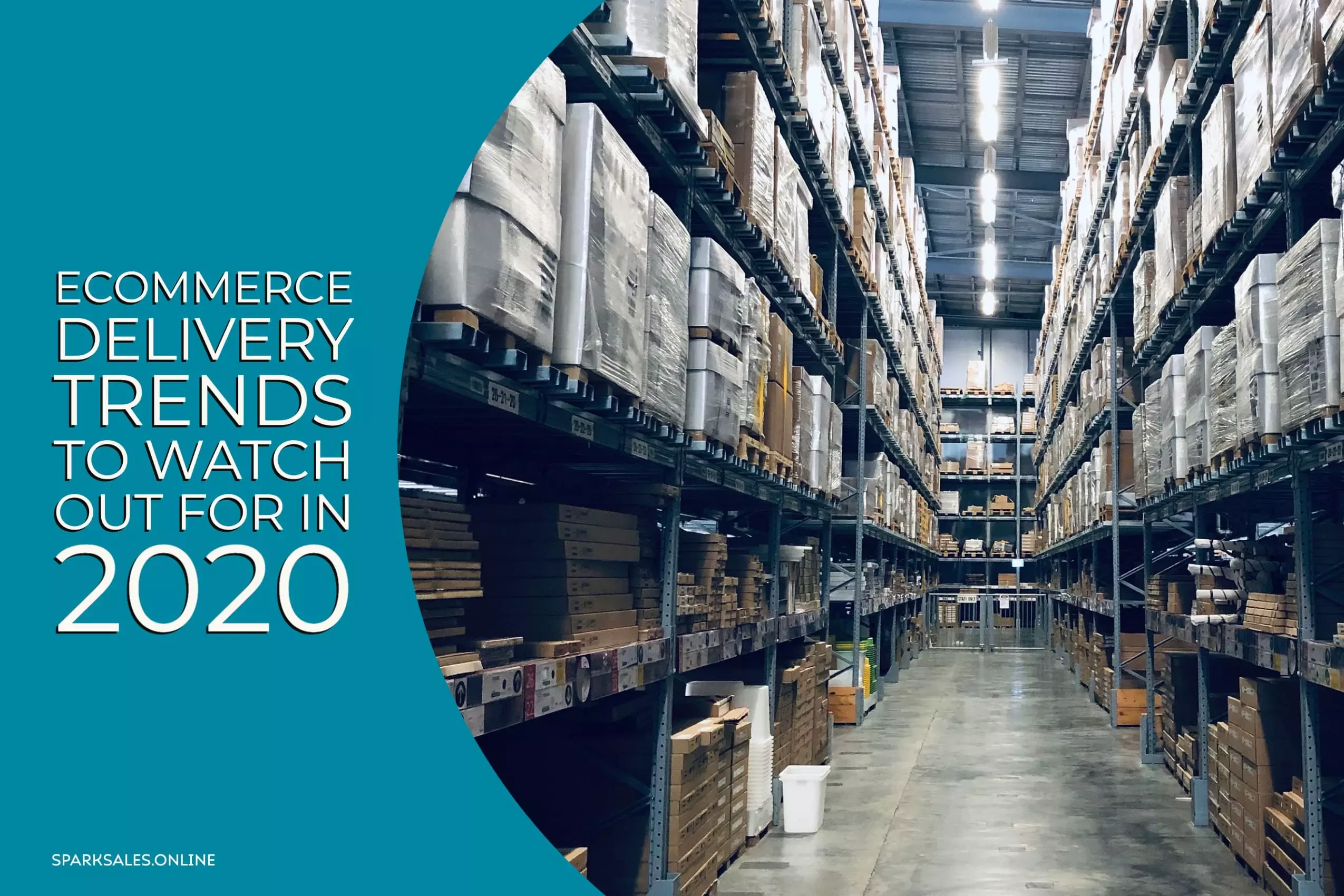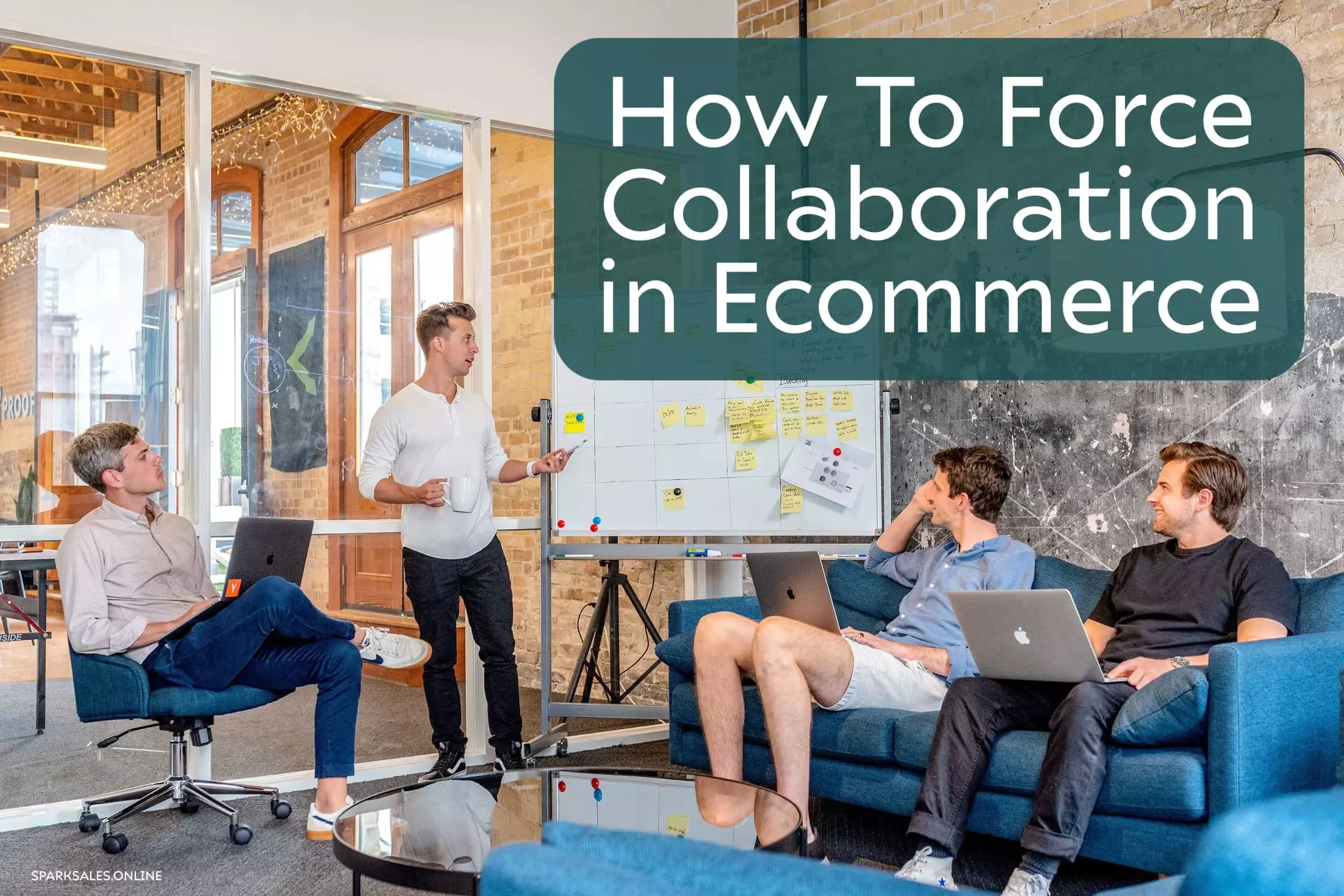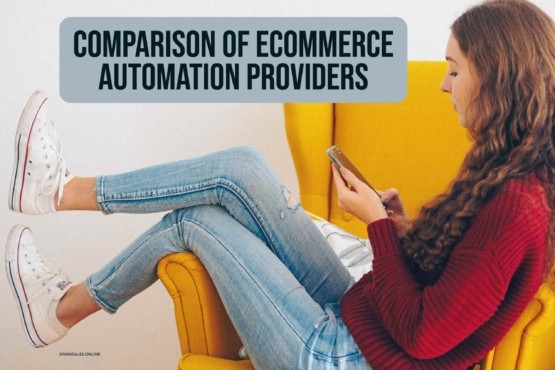Today we’ll be covering why artificial intelligence (AI) and data science are currently such big topics. Why both are essential for today’s retailers and how they can actually impact and influence your consumer’s user experience.
We will also talk about where to start, the main drive behind technology like AI machine learning, and why it’s crucial for you as a retailer to deliver a tailored and personalised experience to your consumer.
Firstly before we jump in, I’d like to leave you with an open rhetorical question. Are you familiar with the term IWWIWWIWI (I Want, What I Want, When I Want It)? That’s the running theme when it comes to artificial intelligence and ecommerce. So today, how well does your company manage to meet your consumer’s expectations in terms of IWWIWWIWI? Try and keep that in mind as you continue reading.
![]()
Why Is AI Now So Important?
Let’s start with the why question. So I like to think that the ‘why’ is pretty straightforward. I think it’s just the way we are, the way we as humans have decided to run the world these days. We’re basing everything in society today on the assumption that we’ll have constant economic growth. We’re betting everything on the fact that tomorrow we’ll do things a little bit better than yesterday. We’ll be more innovative, have more power, fewer resources, and increased productivity; this is what many things in our society are based on. We’ve been doing that throughout multiple revisions that we’ve seen over time within the evolution of technology that we’re in today.
You can see this in the way that we are constantly trying to improve everything we do. Work smarter, produce things for less money, sell more, make faster decisions. So I think the ‘why’ is that this is a continuation of how technology drives increased productivity.
That’s pretty simple, but it’s also easy to see AI as just a normal part of the tech revolution that we are in already and have been living with over the years. We are already in a world where technology dominates pretty much everything, with both hardware and software driving massive changes in almost every industry in our society.
Technology is driving change everywhere, and up until this point, it has been mostly dominated by machines and hardware. As human beings, we have pretty much eliminated entire human workforces from a lot of labour and physically intensive work. Therefore we’re currently reaching towards that next stage where we’re trying to create something better than the organic mind or thought process, and that’s where AI kicks in.
![]()
Why Is a Tailored Personal Experience So Vital for Happy Customers?
It’s just human nature. It’s the same as if you interact with a person you’ve seen before; you expect them to remember your name or greet you as if they know you. That’s a human expectation, and as technologies develop to enable that, our expectation also increases. So it’s continuous growth; what starts as a little bit of a novelty that a company has produced to be slightly different is then expected by the consumer across the board.
Let’s say, for example, that you get a great personalised shopping experience with Amazon in the UK, and then you go and try and to make a purchase from somewhere else, and it’s not as good. Maybe the delivery times took too long, and they didn’t predict what you would buy or recommend extra useful items at checkout. So you decide to keep going back to Amazon. But, then, the other companies have to start doing the same as them to even attempt to compete.
Then you also start to see that permeate through all areas of life; now, even in the banking sector, it’s become essential for your users to have a good customer experience. It used to be that a bank was a place that you used to go and have a formal conversation, you’d fulfil your purpose, and then you’d leave. Now it has to be like a retail experience, and it’s just that constant drive of expectation that creates that because as individuals, we want to be treated as individuals, and we want to feel a bit special.
So we’re just amplifying human nature with these processes. Human beings are inherently lazy; we will always follow the path of least resistance. If two choices are placed in front of us: one of the choices is an experience involving friction stages, and the other one is frictionless. We will always follow the path of less friction. That’s the main thing driving the success of the tailored experience; we’re just inherently lazy as a species.
For example, look at the success of Uber in simply getting their customer from point A to point B. You have a choice to call a taxi; you have to wait for someone to answer the phone, speak to them, tell them where you are and then wait for the car. Then you have to tell the driver where you’re going and make sure you have the fare in cash ready to pay; there’s a lot of friction there compared to Uber’s tailored, personalised experience.
We’re getting to a point where it’s becoming an experience of friction even to have to type. It’s so much easier to say, “Hey, Siri, get me an Uber”, and we just expect it to happen. The human nature of being lazy drives this craze about the tailored experience.
![]()
In What Other Ways Can Artificial Intelligence Be Implemented?
Now we’ve covered quite a bit about the tailored experience and personalisation; we understand that it’s essential and that we need to deliver a tailored experience, but if we try to look at this from a broader perspective regarding product recommendations, how could it be used?
Truthfully there are so many more things for artificial intelligence to tackle than just product recommendations. It’s one thing to have a product recommended, but we must follow the process through all the marketing channels.
It’s very much driven in the same way as the evolution of humankind. We started by mastering fire and building tools in the Stone Age, and we’ve come quite a long way since then. Inherently people are still driven by those same biological trigger points. I mean, it’s true from a psychological perspective that most people still respond very well to someone just telling them what to do. So providing a great customer experience from a retailer point of view drives a perfect subconscious shopping experience for the user. What it ultimately generates are more sales and, therefore, increased engagement.
When you start looking at it from different channels, you don’t have to only think about your store. You can think about offline, social media, etc., and the same concepts work across the board, and it’s becoming inherently more and more dominated by the same psychological concepts.
Also, from the perspective of search in general, the next step is integrated predictive search. Just imagine if a search engine had access to your calendar. It would then be able to see that you’re going to the beach next weekend and see that the weather is forecasting a heatwave. Next, imagine that same search engine starting to suggest where you can purchase sunscreen for your trip.
I think this is also a thing that we are already starting to see; Apple and Google already have access to your calendar. They will tell you, “Hey, you’re late for work” or “Your meeting is in 30 minutes and traffic is heavy today, so you need to get moving”. So we’re already getting this whether we want it or not. We’re realising, “Hey, this is a great service. I don’t have to keep track of where I need to be anymore; the AI-powered thing in my pocket does it for me”.
So with that, that will teach consumers to expect that, which will then be the expectation in any search or service they choose to interact with. At one point in time, soon, we’ll be disappointed by Amazon not knowing that we’re scheduled to go to the beach next week, so we’ll find someplace else that does that for us. As with most of these things, it’s the big companies teaching us what to expect and where the bar is in terms of personalisation.
Many leading brands and retailers talk about how they collect and analyse data from their actual consumers. Under Armour is one great example in terms of them having the fitness app and having tracking technology in their shoes to understand where their runners actually run and where their stores are in relation to that.
It’s also quite interesting that the AI perspective gives incredible insights and how you can change and improve your business in understanding these insights and the needs of the consumer.
![]()
How Do Retailers Use This Intelligence To Understand Their Business?
So, of course, based on machine learning, you get to know the most used keywords, but you also get to know keywords that have several results. So as a business, if you miss some product keywords that customers are looking for or are missing some synonyms, AI can definitely help with that. So this is a significant advancement in technology when it comes to search data.
When you start looking at all of these different AI experiences across different channels and different data sets, you see the importance of having those data sets be accurate. So if we’re looking at something like on-site search or product recommendations based on previous behaviour, examples where you’ve got complex data, you can use that information to see how somebody’s interacted with you. So at that point, it then becomes quite natural to start making predictions.
However, of course, when somebody’s going across different data sets, the opportunity for that data to be corrupted or just be incorrect is pretty significant. So, for example, when it comes to email, people are sometimes guilty of grabbing email addresses and chucking them into a system and not processing or analysing that data correctly. Therefore it’s vital that before you start trying to be predictive, you get your house in order, and it’s crucial to do that to make sure it’s all accurate and up to date.
Once you’ve got your house in order from a data perspective, then you can start making better use of AI. Things can begin to be more contextual as you go across different channels, but getting that right early on is important because otherwise, as with any algorithm, you get junk out if you put rubbish in.
There’s also something called insufficient data. Many stores only rely on transactional data, which only accounts for a couple of percent of all of the data sets that you can actually use to do different things. So you must tie transactional data in with explicit signals, explicit intent and things you actually do on the site. This is immensely important so that you’re not getting into this siloed, walled garden where you have one solution with X data, one solution with Y data and none of these solutions communicating with each other.
How Difficult Is It To Get Started?
I would say that the buzz around AI is continuing and has been around for quite some time. However, now it is almost expected that every channel for every consumer will be personalised. So why is this something that we see retailers having a hard time actually starting to work with? What are the challenges of doing AI correctly?
One point to keep in mind is that marketing is kind of brewing machine learning in its own way. Today, almost every company is doing AI data-driven accelerated data mining etc. it’s just buzzword after buzzword after buzzword. If you go to any of the big tech company websites, you’ll see everyone pitching data-driven, AI, autonomous this and that.
Unfortunately, that then means that for retailers today, it’s tough to narrow down which companies are actually doing something worthwhile, which companies are genuinely spending the time and money on what is required within engineering. What companies are actually about producing results, and which ones are just producing basic data sets and calling them AI. It’s vital to be able to tell them apart.
The reality behind many of these fancy AI brands is that they’re not a thing, they’re not tangible, they’re a brand. So all of these companies have elements of machine learning within their toolset and what those large marketing clouds are doing a lot of is really just branding.
So if you’re using a component of IBM to work out which will be the next best campaign to run, it’s not going to be the same fantastic bit of AI that works out whether people have got certain diseases; that’s just a fallacy. So it’s better to look for tools that are very specific with what they’re trying to achieve, and that’s all they do.
The main reason to push forward with AI is to drive success; most of the time, this is measured by increased sales. A couple of things are already beautifully solved with AI, especially specific, measurable areas. Still, there’s so much more going on in digital commerce, and it’s so much more than just product recommendation or just search or just marketing, automation or messaging.
The more significant challenge is beyond recommendations, communication and search. Questions like which marketing campaign should I run for back to school season? Mother’s Day? What should be our go-to-market strategy? How should we position our offering compared to our competitors? Those are huge questions, and that’s the next level. These are examples of high skilled questions that take a large budget, hard work and intelligence to solve.
Take a look at Google Analytics; for example, everybody has it. We’re all swimming in data but do you know what to do with it? Perhaps you know everything about every single session, everything that goes on in your digital flagship store, but what do you actually do with it? You’re human, you can only take in a certain number of dashboards at a time, and then you need to focus, make decisions and follow up.
These are difficult questions for our brains and even for teams of brains to solve. So this is definitely a topic to stay on top of because this is where we are most certainly heading in the future.
As with almost everything that you want to do well, you have to start with an objective. It reminds me of a conversation I had with a CEO four-five years ago who was a prospective client: “What do you do with social? What’s your objective?” I asked. “No, no, I just need to develop my social strategy,” he replied. “That’s excellent, but what do you want to achieve?” and he couldn’t answer what he wanted to achieve from social.
Obviously, you could do any number of things with social, but if you haven’t got an objective, you’re wasting your time. So as with each of these things, it’s essential to ask yourself what it is that you want to achieve? And can AI help that? Can it measure it? That’s going to be super important, and I think so long as you’ve asked those difficult questions, you won’t go far wrong.
By having systems like that available, it’s really helping us to narrow down and reach where we need to because it’s measurable. So perhaps you want to increase your AOV, or you want to add more items to every order, or maybe you want your bounce rate to be lowered? Once you have specific systems and services in place, it’s actually simple to do just that and then narrow that down to a business objective, and that’s obviously a very powerful thing.
![]()
Is It Possible To Create a Tailored Experience Regardless of Channels and Devices?
Absolutely, I would say that it isn’t about website, desktop or mobile science from a consumer perspective. It’s rather about meeting the brand and those crucial customer journeys.
I think this is one of the most exciting emerging things when it comes to omnichannel or unified commercial, whatever label you put on it, this whole channel-agnostic approach. We all know that the customer journey is never usually a straight line. Your typical customer does not just get an idea in their head and jump on your website to buy something without looking anywhere else first. The buyer’s journey is usually all over the place and generally pretty messy. They might:
- Visit a physical store
- Read a magazine
- See something on TV
- See a billboard
- Listen to something
- See something on social
- See two online ads
- And then, finally, go and purchase something
So this is the challenge with omnichannel: How do we support the journey? How do we keep it tailored and relevant at all times and across all of these components?
One of the first challenges in serving a tailored and personalised experience across all channels is that we need to know that it’s you when you walk into the store. We need to know it’s you when you try to chat with us on messenger; we need to know it’s you when you browse the site or launch the app too.
So user authentication is a crucial thing, and I think this is one thing that all good marketers are trying to find ways around: How do you decrease friction in authenticating people quickly? This is obviously a big struggle for bricks and mortar because it’s hard to do this in the physical world.
That’s definitely something that AI is trying to solve. How do you combine the online shopping journey with what you buy in person? How does that then work with marketing emails and with how Facebook retargeting works? How can offline purchases also get into the mix?
So when you go into a store and browse trainers, and you end up buying a pair of trainers in an offline store on the weekend, you shouldn’t be getting retargeting messages throughout the next week about the trainers you are already wearing. That’s a terrible user experience, and I think it’s just great that this is something that technology is focused on solving because it’s a big problem.
What Kind of Advantages Have Companies Seen Following Implementation of AI Technology?
In terms of a proper detailed level of personalisation, if you’re sending emails that contain content for somebody to browse, or if you’re sending emails that are triggered by on-site actions, then for every $1 you spend on email marketing, you can expect an average return of $42 (DMA, 2019). So obviously, the potential there is enormous.
However, one of the other areas that AI and machine learning is being used is in the back end. So, for example, companies can keep records of every email bounce that they receive if
an email isn’t delivered, that’s all kept within the system. They can then use that information the next time they upload an email list to determine whether it will be successful.
Consequently, before they even hit ‘Send’ if the list looks bad, the system will tell them not to send it because they could affect their sender reputation, and they’re also not going to be delivered. So aside from just the uplift on personalisation, actually using those techniques just keeps you in the game.
This is a complicated topic on most sites, even though they may have pretty extensive analytics and a good team in place to interpret those results. Because there are so many other things that we can track, for example:
- Did we create a new user experience for the customer?
- Was the customer satisfied with their user experience?
- How did implementing automation actually decrease manual labour at the company?
So this is an extensive ever-evolving topic. Look at the journey Google has taken us on. It’s a fact that a high position and relevant search results will increase conversion and sales. They do work, especially for products. So the numbers are there, but it’s also essential to view AI from a resources perspective. You can indeed do a lot of this stuff manually, but you really shouldn’t be doing that. You should not be sitting and clicking on products one by one to update them. We should be moving these tasks over to systems that can do this quickly and easily for us with high precision.
Again with marketing, communication and promotions, you shouldn’t be sitting there trying to figure out what time you should send an email. Whether a particular segment is valuable or not or what the customer lifetime value is for that type of customer group. Intelligent systems should handle this.
When it comes to search, you should not be generating synonyms and alternative phrases yourself. These things are absolutely not designed to be done manually. Instead, it’s all about freeing up resources.
A good way of thinking of this is, “How can I eliminate labour? How can I do this by using other systems that have perfect knowledge and make faster, wiser, better decisions than humans and can automatically report back the results?”
Now you have the technology available to do this for you, leaving you free to focus on the bigger things in your business that we don’t yet have systems for. Ultimately, the aim is to free up resources for the evolution of your business. Following the idea of a business biome, we can recognise the need to move from responsive and even pre-emptive organisational approaches to a collaborative model involving co-evolution with artificial intelligence.








